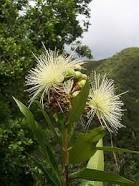The inseparable companion nature of the campaign life of José Martí Pérez
Main Article Content
Abstract
Article Details
As part of the submission process, authors are required to check off their submission meets all the elements listed below, and they know that shipments that do not meet these guidelines may be returned to the author.
DECLARATION OF ORIGINALITY
The author Authorship and author who refers or shipping to UPR CIFAM, CERTIFY:
- That each of the people in it are listed as author or author has contributed directly to the intellectual content of the work, approves the contents of the manuscript is submitted to editorial process and gives its consent that their name appears on the authorship thereof.
- That the request has not been previously published, it is not under review in another journal, nor included in another paper accepted for publication by another publisher.
- That in the event that the content has been presented in a communication or congress, the current request is a substantial modification thereof and has properly been cited text on which it is based. This circumstance an explanation is provided to the publisher at the right place of the submission form (box "Comments to the Editor").
- That each of the people listed as author or author agrees not to submit this work for consideration by another publication while in CIFAM Journal editorial process.
- It has been recognized in a note the article, by way of thanks, the contribution of those which are not signatories to the same or responsible for the final version, have contributed substantially to the development of labor so and have given their permission to such mention.
- Data and publications in which the information contained in the work, or who have had a significant influence on it is based have been cited in the text and in the list of references, being responsible, in respect of rights author refers, of any dispute or claim relating to intellectual property rights, exonerating from liability CIFAM journal.
Likewise, the author who submitted work must confirm compliance with the following points:
- The text meets the style and bibliographic requirements outlined in the "Uniform requirements for manuscripts submitted to the journal."
- If the text is attached to a section of the journal subject to peer review (see policy sections), has made sure to follow the directions given in Ensuring Blind Review.
- The file is sent in DOC or DOCX format.
- Where it has been possible, they have been added and DOI web addresses in the references.
Copyright Notice:
Authors who publish in this journal agree to the following terms:
- The authors retain copyright, ensuring Journal CIFAM the right of first publication of the work that refer to the magazine to be submitted to the editorial process.
- Authors know that his work is published under a Creative Commons License Attribution-NonCommercial 4.0 International that allows others to share it with a recognition of the authorship of the work and its initial publication in this journal.
- The authors give to the CIFAM Journal the rights of exploitation of the work which has been published in this journal, authorizing the publishing of it for the exercise of a free reproduction, distribution and public communication without commercial purposes.
- Authors know that their work will be stored on servers and reproduced in digital format for inclusion in institutional repositories and databases that will facilitate free access to the full text of the work.
- Authors can distribute the version of the work published in CIFAM Journal (for example, to an institutional repository or publish it in a book), with an express acknowledgment of its initial publication in this journal.
References
Almendros, H. (2010). Nuestro Martí. La Habana. Editora Pueblo y Educación.
Guzmán, O., Caballero, T. (2002) Martí y la naturaleza. En Revista Santiago No 95. Recuperado en: http://ojs.uo.edu.cu/index.php/stgo/article/viewFile/14502107/59
Hernández, A; Pérez, S y Hernández, L. La flora referida por José Martí en el Diario de Campaña desde Playitas de Cajobabo a Dos Ríos. Valores de uso. En Revista Luz.Vol. 5 Núm. MA (2006): Edición 20 ISSN: 1814-151XRNPS: 2054
Recuperado en https://luz.uho.edu.cu/index.php/luz/article/view/236
Martí, J. (1877). Carta a Manuel Mercado 1ero de enero 1877. En Obras Escogidas. t.1. p.62. La Habana. Editorial Ciencias Sociales. 1992.
Martí, J. (1880). Carta a su hermana Amelia. 1880. En Obras Escogidas t 8. P 286La Habana. Editorial Ciencias Sociales. 1992.
Martí, J. (1882). La Opinión Nacional, Caracas. 19 de mayo de 1882. En Obras Escogidas. t.1. p. 302. La Habana. Editorial Ciencias Sociales. 1992.
Martí, J. (1883) Educación Científica, La América, New York. Septiembre de 1883. En Martí en la Universidad.p 289.La Habana.Editorial Félix Varela. 1997.
Martí, J. (1883). Congreso forestal. La América, New York. Septiembre de 1883. En Obras Completas t 8. P 302La Habana. Editorial Ciencias Sociales. 1992.
Martí, J (1894) Carta a Máximo Gómez 20 de abril de 1894. En Obras Completas. T.4. P.121. Editorial Ciencias Sociales. 1992.
Martí, J. (1895) Diario de Campaña: De Cabo Haitiano a Dos Ríos. Centro de Estudios Martianos. La Habana. 1985.
Núñez, A. (1998). Hacia una cultura de la naturaleza. La Habana. Editorial SI-MAR S.A
Núñez, A. (2002). José Martí: el hombre y la naturaleza. La Habana. EditorialSI-MAR S.A
Toledo, J. (2003). La ciencia y la técnica en José Martí. La Habana. Editorial Científico Técnica


